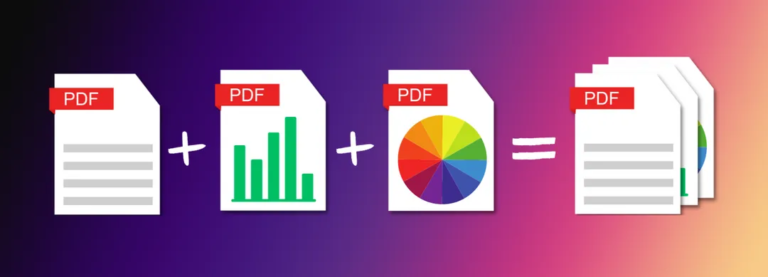Land Mulching: A Sustainable Solution to Invasive Plant Species
Whether you own a large estate, a commercial property, or a backyard garden, many property owners have the same goal: keeping their landscapes healthy and flourishing. The invasion of invasive and non-native plant species is one of the ongoing problems that landowners deal with, though. In addition to lowering biodiversity and posing aesthetic and maintenance challenges, these plants can endanger the wellbeing of natural ecosystems. Land mulching is a viable and efficient way to address this issue. We’ll go into the importance of invasive plant species, look at land mulching as a remedy, talk about the procedure, and even touch on the function of professional services in returning your land to its original beauty in this extensive guide.
The Impact of Invasive Plant Species
Biodiversity Threat
Invasive plants have the ability to displace native species in the competition for resources such as sunshine, water, and nutrients, which results in a loss of native biodiversity.
Disruption of Habitat
Native plant and wildlife habitats can be disrupted by invasive species, which can change natural ecosystems.
Economic and Aesthetic Repercussions
Invasive plants can raise landowners’ maintenance expenses and have a detrimental effect on the beauty of landscapes.
Land Mulching’s Advantages
1. Suppression of Weeds
- By efficiently suppressing invasive plant development, land mulching keeps the plants from taking root.
2. Improvement of Nutrients
- Fertility and soil health can be enhanced by organic mulch, which benefits desirable native plants.
3. Sustaining Wetness
- Mulch preserves soil moisture, which lessens the demand for irrigation and preserves water.
4. Control of Erosion
- Mulch stabilizes the earth, especially on slopes and bare spots, preventing soil erosion.
5. Improved Visual Appeal
- By giving a landscape a tidy and well-kept appearance, land mulching can enhance its overall appeal.
The Method of Land Mulching
1. Improved Visual Appeal
- Assessment Determine the target regions for mulching and gauge the amount of the invasive plant invasion before moving on.
2. Removal of Invasive Plants
- It is imperative to remove any existing invasive plants from the allocated areas prior to mulching.
3. Application of Mulch
- Over the cleaned areas, spread a layer of organic mulch. For the purpose of efficiently inhibiting weed development, the mulch needs to be thick enough.
4. Upkeep
- Make sure that the mulched areas are kept clean and free of invasive plants by keeping an eye on them and doing routine maintenance.
The Function of Expert Services
While small-scale land mulching tasks can be completed by hand, hiring land mulching services from companies can provide a number of benefits for more involved or larger-scale initiatives.
- Expertise: Qualified individuals has the skills and understanding necessary to recognize invasive species and choose the right mulch components.
- Efficiency: While large-scale land mulching projects might take a lot of time for individuals to do, professionals have the tools and manpower to finish the job quickly.
- Custom Solutions: To ensure the best outcomes, professionals can modify their mulching strategy to meet the unique requirements of your site.
- Erosion Control: By decreasing soil loss, experts can offer solutions for regions that are prone to erosion.
- Maintenance Schedules: To guarantee the long-term success of your land mulching project, professional firms frequently provide continuing maintenance schedules.
Stopping the Reinfestation of Invasive Species
1. Initial Identification
- Keep an eye out for any indications of invasive plant regrowth on your property and take quick action to contain any fresh breakouts.
2. Promotion of Native Plants
- Promote the establishment of native plants on your land since they can help local wildlife and outcompete invasive species.
3. Regrowth of Mulch
- To maintain weed suppression in regions vulnerable to invasive species, replace the mulch layer on a regular basis.
4. Awareness and Education
- Inform everyone, including yourself, of the value of protecting native ecosystems and preventing alien species.
Wrap-Up
The integrity and aesthetic appeal of your landscape may be seriously threatened by invasive plant species. But you may efficiently manage and suppress these invaders if you use the appropriate strategy. In addition to addressing invasive species, land mulching improves the appearance of your property and supports the health of your soil. It is a sustainable and environmentally beneficial option.
A useful weapon in the fight against invasive species is land mulching, which has several advantages such as weed reduction, nutrient enhancement, moisture retention, and erosion management. While property owners can do small-scale improvements on their own, larger or more complicated projects might benefit from the knowledge and effectiveness of professional services such as https://blueridgelandenhancements.com/.
You can avoid reinfestations and keep your landscape vibrant, healthy, and free of invasive species by being proactive and using strategies including early identification, encouraging native plants, and replacing mulch layers. Ultimately, land mulching is a step toward protecting your property’s biodiversity and natural beauty for future generations, not just a way to get rid of unwanted species.







